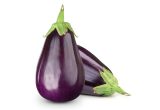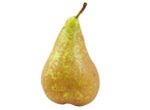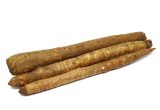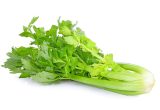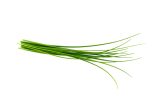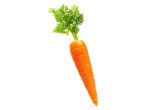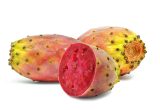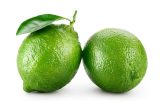Pear (Williams)

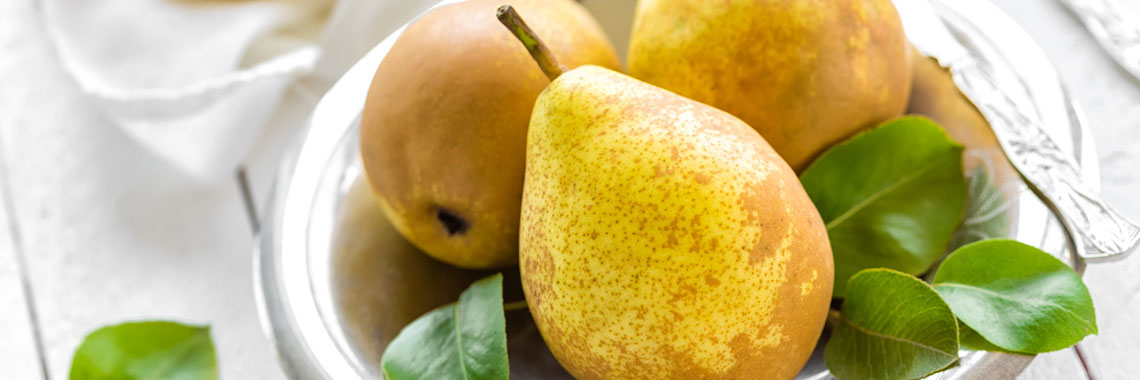
Description
- Williams pear belongs to the Rosaceae family, genus Pyrus, species communis (Chagné, 2014).
- Originally from Asia, the pear tree has been established in France since time immemorial. Today, 2,000 varieties are listed, including the Williams pear, a summer fruit born dating back to 1796 (Centre national de pomologie d’Ales, 2010).
PHYSICAL AND ORGANOLEPTIC CHARACTERISTICS
- Pear tree flowers are white to whitish-pink with five petals and are often mistaken for apple tree flowers. In the autumn, the edible fruit, 6.5 to 10 cm long, ripen to a green to brown colour (Andreu, 2008). The pear is harvested when its skin becomes dark green to light green in colour (Nath, 2012). Like avocados or kiwis, it needs a few days after harvest to ripen (Murayama, 2006).
- The two esters (ethyl (E, Z) -2,4-decadienoate and ethyl (E, E) -2,4-decadienoate) are responsible for the typical Williams pear odour, while hexyl acetate provides the aroma (Zierer, 2016).
- The sugar content in Williams pears varies from 8 to 11% with fructose as the main sugar (Chatfield and McLaughlin, 1928). The impact of sugar is affected by the juiciness of the fruit: the juicier the fruit, the sweeter the taste (Visser, 1968).
- The resistance of its strong aromatic compounds to heat may explain the use of the Williams variety in the manufacture of canned pear and pear brandy (Quamme, 1985).
- There are yellow and red varieties of Williams pears. The expression level of the PcMYB10 gene is significantly higher in the red variety than in the yellow variety. This gene is involved in the biosynthesis of anthocyanins, the polyphenols responsible for the red colour of the fruit (Pierantoni, 2010).
COMPOSITION CHARACTERISTICS (excluding macronutrients, vitamins and minerals)
- Their high fibre concentration probably explains the laxative properties of pears and their effect on gut health (Reiland, 2015).
- An American team observed a high content of total polyphenols in Williams pear skin extracts, as well as antioxidant free radical scavenging activities related to 2,2 diphenyl-1-picrylhydrazyl (Sarkar, 2015). Among these phenolic compounds, isorhamnetin glycosides and malonates are thought to represent a significant amount (Lin, 2008).
RAW
The following values are approximate and depend on variety, season, ripeness, cultivation conditions, etc. The average Williams pear provides 54.10 calories (kcal) per 100 g, i.e. 228 kJ. A Williams pear weighs an average of 120 g, giving an energy intake of 64.92 kcal.
COMPOSITION TABLES
For each nutrient, the tables provide information on the content, minimum and maximum values, as well as the percentage of the Dietary Reference Values (DRVs) for 100 g net of raw Williams pear, without skin (except for the table on polyphenols, which concerns unknown varieties of pears without skin).
MACRONUTRIENTS
| Constituent (g) | Average content |
Min-Max per 100g |
DRV% |
|---|---|---|---|
| Water | 84,70 | - | - |
| Fibers | 3,10 | - | - |
| Carbohydrates | 11,50 | 0 - NC | 4,42 |
| Sugars | 9,40 | - | 10,44 |
| Lipids | < 0,50 | - | - |
| Saturated fat | < 0,01 | - | - |
| Protein | < 0,50 | - | - |
| Constituent (g) | Amount | Min-Max | DRV% |
|---|---|---|---|
| Water | Ciqual 2020 (valeur issue des analyses Ciqual-Aprifel 2017) | - | - |
| Fibers | Ciqual 2020 (valeur issue des analyses Ciqual-Aprifel 2017) | - | - |
| Carbohydrates | Ciqual 2020 | - | Règlement (UE) N°1169/2011 du parlement Européen et du conseil du 25 octobre 2011 |
| Sugars | Ciqual 2020 (valeur issue des analyses Ciqual-Aprifel 2017) | - | Règlement (UE) N°1169/2011 du parlement Européen et du conseil du 25 octobre 2011 |
| Lipids | Ciqual 2020 (valeur issue des analyses Ciqual-Aprifel 2017) | - | Règlement (UE) N°1169/2011 du parlement Européen et du conseil du 25 octobre 2011 |
| Saturated fat | Ciqual 2020 (valeur issue des analyses Ciqual-Aprifel 2017) | - | Règlement (UE) N°1169/2011 du parlement Européen et du conseil du 25 octobre 2011 |
| Protein | Ciqual 2020 (valeur issue des analyses Ciqual-Aprifel 2017) | - | Règlement (UE) N°1169/2011 du parlement Européen et du conseil du 25 octobre 2011 |
Zoom on carbohydrates
- Williams pears also contain a significant amount of carbohydrates (11.50 g per 100 g), which is higher than the average for this macronutrient in fresh fruit (10.40 g per 100 g).
- These are mainly fructose (7.20 g per 100 g), sorbitol (1.90 g per 100 g), sucrose (1.20 g per 100 g) and glucose (1 g per 100 g).
Zoom on fibres
- The Williams pear is a source of fibre* as it provides more than 3 g per 100 g of fruit, i.e. 3.10 g per 100 g.
- This amount is higher than the average quantity of fibre present in fresh fruit (2.77 g per 100 g).
Zoom on lipids
- The Williams pear is fat-free* as it contains less than 0.5 g of fat per 100 g.
*Regulation (EC) No 1924/2006 of the European Parliament and of the Council of 20 December 2006 on nutrition and health claims made on foods.
MINERALS AND TRACE ELEMENTS
| Constituent | Average content |
Min-Max per 100g |
DRV% |
|---|---|---|---|
| Calcium (mg) | 6,10 | - | 0,76 |
| Chloride (mg) | < 20 | - | - |
| Copper (mg) | 0,05 | - | 5 |
| Iron (mg) | 0,07 | - | 0,50 |
| Iodine (µg) | < 20 | - | - |
| Magnesium (mg) | 5,30 | - | 1,41 |
| Manganese (mg) | 0,02 | - | 1 |
| Phosphorus (mg) | 9,80 | - | 1,40 |
| Potassium (mg) | 120 | - | 6 |
| Selenium (µg) | < 20 | - | - |
| Sodium (mg) | < 5 | - | - |
| Zinc (mg) | 0,09 | - | 0,90 |
| Constituent | Amount | Min-Max | DRV% |
|---|---|---|---|
| Calcium (mg) | Ciqual 2020 (valeur issue des analyses Ciqual-Aprifel 2017) | - | Règlement (UE) N°1169/2011 du parlement Européen et du conseil du 25 octobre 2011 |
| Chloride (mg) | Ciqual 2020 (valeur issue des analyses Ciqual-Aprifel 2017) | - | Règlement (UE) N°1169/2011 du parlement Européen et du conseil du 25 octobre 2011 |
| Copper (mg) | Ciqual 2020 (valeur issue des analyses Ciqual-Aprifel 2017) | - | Règlement (UE) N°1169/2011 du parlement Européen et du conseil du 25 octobre 2011 |
| Iron (mg) | Ciqual 2020 (valeur issue des analyses Ciqual-Aprifel 2017) | - | Règlement (UE) N°1169/2011 du parlement Européen et du conseil du 25 octobre 2011 |
| Iodine (µg) | Ciqual 2020 (valeur issue des analyses Ciqual-Aprifel 2017) | - | Règlement (UE) N°1169/2011 du parlement Européen et du conseil du 25 octobre 2011 |
| Magnesium (mg) | Ciqual 2020 (valeur issue des analyses Ciqual-Aprifel 2017) | - | Règlement (UE) N°1169/2011 du parlement Européen et du conseil du 25 octobre 2011 |
| Manganese (mg) | Ciqual 2020 (valeur issue des analyses Ciqual-Aprifel 2017) | - | Règlement (UE) N°1169/2011 du parlement Européen et du conseil du 25 octobre 2011 |
| Phosphorus (mg) | Ciqual 2020 (valeur issue des analyses Ciqual-Aprifel 2017) | - | Règlement (UE) N°1169/2011 du parlement Européen et du conseil du 25 octobre 2011 |
| Potassium (mg) | Ciqual 2020 (valeur issue des analyses Ciqual-Aprifel 2017) | - | Règlement (UE) N°1169/2011 du parlement Européen et du conseil du 25 octobre 2011 |
| Selenium (µg) | Ciqual 2020 (valeur issue des analyses Ciqual-Aprifel 2017) | - | Règlement (UE) N°1169/2011 du parlement Européen et du conseil du 25 octobre 2011 |
| Sodium (mg) | Ciqual 2020 (valeur issue des analyses Ciqual-Aprifel 2017) | - | - |
| Zinc (mg) | Ciqual 2020 (valeur issue des analyses Ciqual-Aprifel 2017) | - | Règlement (UE) N°1169/2011 du parlement Européen et du conseil du 25 octobre 2011 |
Zoom on minerals and trace elements
- The Williams pear provides the equivalent of:
- 6% of DRVs for potassium, i.e. 120 mg per 100 g;
- 5% of DRVs for copper, i.e. 0.05 mg per 100 g.
- The amount of other minerals and trace elements represents less than 2% of DRVs.
VITAMINS
| Constituent | Average content |
Min-Max per 100g |
DRV% |
|---|---|---|---|
| Provitamin A Beta-carotene (µg) | < 5 | - | - |
| Vitamin A equivalent (µg) | < 0,83 | - | - |
| Vitamin B1 (mg) | < 0,015 | - | - |
| Vitamin B2 (mg) | < 0,01 | - | - |
| Vitamin B3 (mg) | < 0,10 | - | - |
| Vitamin B5 (mg) | 0,06 | - | 1 |
| Vitamin B6 (mg) | < 0,01 | - | - |
| Vitamin B9 (µg) | 18,40 | - | 9,20 |
| Vitamin C (mg) | 2,57 | - | 3,21 |
| Vitamin E (mg) | < 0,08 | - | - |
| Vitamin K1 (µg) | < 0,80 | - | - |
| Constituent | Amount | Min-Max | DRV% |
|---|---|---|---|
| Provitamin A Beta-carotene (µg) | Ciqual 2020 (valeur issue des analyses Ciqual-Aprifel 2017) | - | - |
| Vitamin A equivalent (µg) | Calcul à partir de la valeur Provitamine A Béta-carotène* | - | Règlement (UE) N°1169/2011 du parlement Européen et du conseil du 25 octobre 2011 |
| Vitamin B1 (mg) | Ciqual 2020 (valeur issue des analyses Ciqual-Aprifel 2017) | - | Règlement (UE) N°1169/2011 du parlement Européen et du conseil du 25 octobre 2011 |
| Vitamin B2 (mg) | Ciqual 2020 (valeur issue des analyses Ciqual-Aprifel 2017) | - | Règlement (UE) N°1169/2011 du parlement Européen et du conseil du 25 octobre 2011 |
| Vitamin B3 (mg) | Ciqual 2020 (valeur issue des analyses Ciqual-Aprifel 2017) | - | Règlement (UE) N°1169/2011 du parlement Européen et du conseil du 25 octobre 2011 |
| Vitamin B5 (mg) | Ciqual 2020 (valeur issue des analyses Ciqual-Aprifel 2017) | - | Règlement (UE) N°1169/2011 du parlement Européen et du conseil du 25 octobre 2011 |
| Vitamin B6 (mg) | Ciqual 2020 (valeur issue des analyses Ciqual-Aprifel 2017) | - | Règlement (UE) N°1169/2011 du parlement Européen et du conseil du 25 octobre 2011 |
| Vitamin B9 (µg) | Ciqual 2020 (valeur issue des analyses Ciqual-Aprifel 2017) | - | Règlement (UE) N°1169/2011 du parlement Européen et du conseil du 25 octobre 2011 |
| Vitamin C (mg) | Ciqual 2020 (valeur issue des analyses Ciqual-Aprifel 2017) | - | Règlement (UE) N°1169/2011 du parlement Européen et du conseil du 25 octobre 2011 |
| Vitamin E (mg) | Ciqual 2020 | - | Règlement (UE) N°1169/2011 du parlement Européen et du conseil du 25 octobre 2011 |
| Vitamin K1 (µg) | Ciqual 2020 (valeur issue des analyses Ciqual-Aprifel 2017) | - | Règlement (UE) N°1169/2011 du parlement Européen et du conseil du 25 octobre 2011 |
Zoom on vitamins
- Williams pears provide the equivalent of 9.20% of DRVs for vitamin B9, i.e. 18.40 µg per 100 g.
- The quantity of other vitamins represents less than 4% of DRVs.
*Calculation made: Beta Carotene / 6 + retinol
POLYPHENOLS
| Constituent (mg) | Average content |
Min-Max per 100mg |
|---|---|---|
| Flavonoids (mg) | 3,42 | 1,27 - 7,28 |
| of which Flavanols (mg) | 3,42 | 1,27 - 7,28 |
| Phenolic Acids (mg) | 3,50 | 1,17 - 5,5 |
| of which Hydroxybenzoic acids (mg) | 3,50 | 1,17 - 5,5 |
| Other Polyphenols (mg) | 1,40 | 0 - 1,92 |
| Total polyphenols | 8,32 | 2,44 - 14,70 |
| Constituent (mg) | Amount | Min-Max |
|---|---|---|
| Flavonoids | Phénol-Explorer version3.6 Méthode utilisée : chromatographie | - |
| of which Flavanols | Phénol-Explorer version 3.6 Méthode utilisée : chromatographie | - |
| Phenolic Acids | Phénol-Explorer version3.6 Méthode utilisée : chromatographie | - |
| of which Hydroxybenzoic acids | Phénol-Explorer version 3.6 Méthode utilisée : chromatographie | - |
| Other Polyphenols | Phénol-Explorer version 3.6 Méthode utilisée : chromatographie | - |
| Total polyphenols | Phénol-Explorer version 3.6 Méthode utilisée : chromatographie | - |
Zoom on polyphenols (unknown varieties of pears analysed, without skin)
- Polyphenols are substances with an antioxidant effect.
- Hydroxycinnamic acids, which are part of the phenolic acids, are predominantly present in pear composites, representing 42.10% of the total polyphenols identified.
- Next come flavanols, which are part of the flavonoids (41.10% of total polyphenols).
Nutrition and health claims
According to the definitions of nutrition claims as set out in Regulation (EC) No 1924/2006 on nutrition and health claims, and in view of the composition of the Williams pear, the following nutrition claim may be used:
NUTRITION CLAIMS OF WILLIAMS PEARS (raw, without skin)
- Fat-free (100 g of Williams pears contain less than 0.5 g of fat)
- Source of fibre (100 g of Williams pears provide more than 3 g of fibre)
References
- Agence nationale de sécurité sanitaire de l’alimentation, de l’environnement et du travail. Table de composition nutritionnelle des aliments Ciqual 2020. Consultée le 17/08/2020 depuis le site internet Ciqual https://ciqual.anses.fr/
- Andreu M.G, Friedman M.H, Northrop R.J. 2008. Pyruscommunis, common pear [en ligne]. [consulté le 19/02/2020]. Disponible à l’adresse : https://www.growables.org/information/LowChillFruit/documents/PyrusCommunisCommonPear.pdf.
- Centre National de Pomologie d’Ales, Ministère de l’Agriculture. 2010. fiche_poire.pdf [en ligne]. [consulté le 19/02/2020]. Réalisé pour la direction générale de l’alimentation dans le cadre d’un fruit à la récréation. Disponible à l’adresse : https://agriculture.gouv.fr/sites/minagri/files/documents/pdf/fche_poire.pdf.
- Chagné D, Crowhurst RN, Pindo M. The draft genome sequence of European pear (Pyrus communis L. ‘Bartlett’). PLoS One. 2014;9(4):e92644.
- Chatfield, McLaughlin (1928). Proximate Composition of Fresh Fruits. Etats-Unis : U.S. Department of Agriculture, 20 p.
- Lin L, Harnly J. Phenolic Compounds and Chromatographic Profiles of Pear Skins (Pyrus Spp.). Journal of Agricultural and Food Chemistry. 2008;56(19):9094‑9101.
- Murayama H, Sekine D, Yamauchi Y, Gao M, Mitsuhashi W, Toyomasu T. Effect of Girdling above the Abscission Zone of Fruit on “Bartlett” Pear Ripening on the Tree. Journal of Experimental Botany. 2006;57(14):3679‑86.
- Nath A, Deka BC, Singh A, Patel RK, Paul D, Misra LK, Ojha H. Extension of shelf life of pear fruits using different packaging materials. J Food Sci Technol. 2012 Oct;49(5):556-63.
- Neveu V, Perez-Jiménez J, Vos F, Crespy V, du Chaffaut L, Mennen L, Knox C, Eisner R, Cruz J, Wishart D, Scalbert A. (2010) Phenol-Explorer: an online comprehensive database on polyphenol contents in foods. Database, doi: 10.1093/database/bap024. Full text (free access)
- Pierantoni L, Dondini L, De Franceschi P, Musacchi S, Winkel B, Sansavini S. Mapping of an Anthocyanin-Regulating MYB Transcription Factor and Its Expression in Red and Green Pear, Pyrus Communis. Plant Physiology and Biochemistry. 2010;48(12):1020‑26.
- Quamme, Gray (1985). Evaluation of Quality of Fruits and Vegetables. Harold E. Pattee, 648 p.
- Reiland H, Slavin J. Systematic Review of Pears and Health. Nutr Today. 2015;50(6):301–305.
- Règlement (CE) N° 1924/2006 du Parlement européen et du Conseil du 20 décembre 2006 concernant les allégations nutritionnelles et de santé portant sur les denrées alimentaires.
- Règlement (UE) N°432/2012 de la Commission du 16 mai 2012 établissant une liste des allégations de santé autorisées portant sur les denrées alimentaires, autres que celles faisant référence à la réduction du risque de maladie ainsi qu’au développement et à la santé infantiles.
- Règlement (UE) n°1169/2011 du Parlement européen et du Conseil du 25 octobre 2011 concernant l’information des consommateurs sur les denrées alimentaires, modifiant les règlements (CE) n°1924/2006 et (CE) n°1925/2006 du Parlement européen et de Conseil et abrogeant la directive 87/250/CEE de la Commission, la directive 90/496/CEE du Conseil, la directive 1999/10/CE de la Commission, la directive 200/13/CE du Parlement européen et du Conseil, les directives 2002/67/CE et 2008/5/CE de la Commission et le règlement (CE) n°608/2004 de la Commission.
- Sarkar D, Ankolekar C, Pinto M, Shetty K. Dietary functional benefits of Bartlett and Starkrimson pears for potential management of hyperglycemia, hypertension and ulcer bacteria Helicobacter pylori while supporting beneficial probiotic bacterial response. Food Research International. 2015;69(1):80-90.
- Visser T, Schaap AA, De Vries DP. Acidity and sweetness in apple and pear. Euphytica. 1968;17(1):153-67.
- Zierer B, Schieberle P, Granvogl M. Aroma-Active Compounds in Bartlett Pears and Their Changes during the Manufacturing Process of Bartlett Pear Brandy. Journal of Agricultural and Food Chemistry. 2016;64(50):9515‑22.





